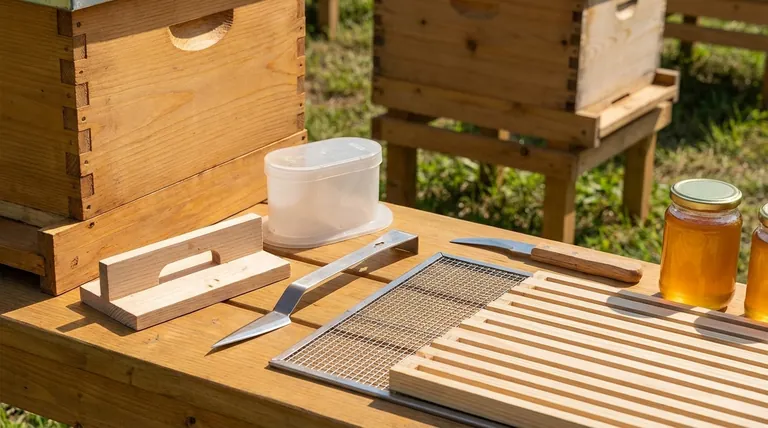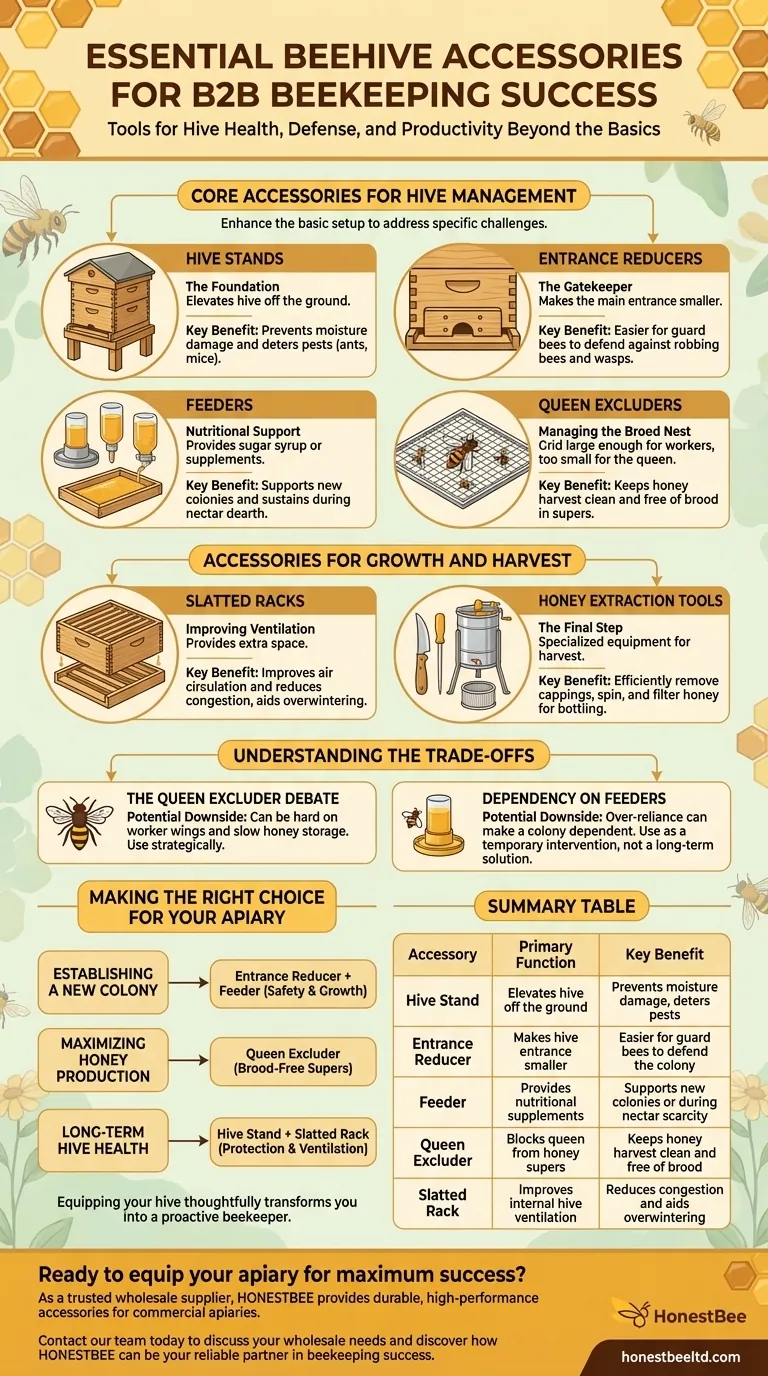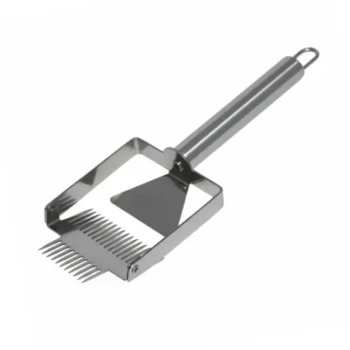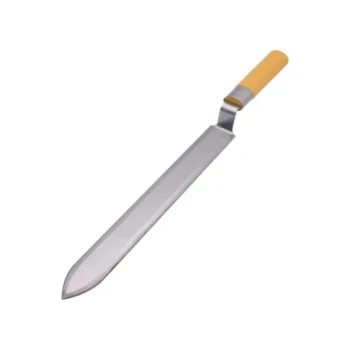To manage a beehive effectively, you will need several common accessories beyond the basic boxes and frames. The most essential items include hive stands, entrance reducers, feeders, and queen excluders, each serving a specific purpose in hive health, defense, and productivity. These tools are rarely included in a standard starter kit but are critical for successful beekeeping.
While a basic hive provides shelter, hive accessories are the functional tools you use to solve problems. Understanding their purpose allows you to proactively manage your colony's health, safety, and productivity throughout the year.

Core Accessories for Hive Management
A standard beehive consists of a bottom board, boxes for brood and honey (supers), frames, and inner and outer covers. Accessories are the items that enhance this basic setup to address specific challenges.
Hive Stands: The Foundation
A hive stand is the base that elevates the entire hive off the ground.
This simple accessory is crucial for protecting the colony from ground moisture, which can lead to wood rot and unhealthy hive conditions. It also makes it more difficult for pests like ants and mice to invade.
Entrance Reducers: The Gatekeeper
An entrance reducer is a small piece of wood that fits into the hive's main entrance to make the opening smaller.
This is a critical tool for new or weak colonies. A smaller entrance is easier for the guard bees to defend against robbing bees from other hives or predatory wasps.
Feeders: Nutritional Support
Feeders are used to provide sugar syrup or other nutritional supplements to the bees.
They are essential for helping a new colony draw out comb quickly or for sustaining a hive during periods of nectar dearth. There are many types, including entrance feeders, top feeders, and in-hive frame feeders.
Queen Excluders: Managing the Brood Nest
A queen excluder is a grid of wire or plastic with openings that are large enough for worker bees to pass through but too small for the larger queen.
It is placed between the brood boxes and the honey supers. This ensures the queen cannot lay eggs in the honey supers, keeping your honey harvest clean and free of brood.
Accessories for Growth and Harvest
As your colony grows and begins producing a surplus of honey, you will need tools to manage ventilation and to perform the extraction.
Slatted Racks: Improving Ventilation
A slatted rack is a wooden insert placed between the bottom board and the first brood box.
It provides extra space that helps improve air circulation and reduce congestion at the hive entrance. This can lead to a more even distribution of brood and better overwintering success.
Honey Extraction Tools: The Final Step
Once you are ready to harvest, you will need specialized equipment. This is often a separate category of investment for beekeepers.
Common tools include an uncapping knife to remove the wax cappings from the honeycomb, a honey extractor to spin the honey out of the frames, and filters or strainers to remove wax particles before bottling.
Understanding the Trade-offs
No accessory is a perfect solution, and some come with debates within the beekeeping community. It's important to understand the potential downsides.
The Queen Excluder Debate
Some beekeepers avoid using queen excluders. They argue that the barrier can be hard on worker bees' wings as they pass through repeatedly and may slow down the process of storing honey in the supers.
The key is to use them only when necessary for honey production and to ensure they are properly sized and free of defects.
Dependency on Feeders
While essential at times, over-reliance on feeders can make a colony dependent on artificial food sources. The primary goal should always be to have a colony that is self-sufficient from local nectar flows.
Feeding is a strategic intervention, not a long-term solution.
Making the Right Choice for Your Apiary
The accessories you need will depend entirely on your goals, your local climate, and the specific challenges your colony faces.
- If your primary focus is establishing a new colony: An entrance reducer and a feeder are your most important initial investments for safety and growth.
- If your primary focus is maximizing honey production: A queen excluder is non-negotiable for ensuring brood-free honey supers.
- If your primary focus is long-term hive health: A hive stand and a slatted rack provide crucial protection from moisture and improve ventilation.
Equipping your hive thoughtfully transforms you from a bee-haver into a proactive beekeeper.
Summary Table:
| Accessory | Primary Function | Key Benefit |
|---|---|---|
| Hive Stand | Elevates hive off the ground | Prevents moisture damage and deters pests |
| Entrance Reducer | Makes hive entrance smaller | Easier for guard bees to defend the colony |
| Feeder | Provides nutritional supplements | Supports new colonies or during nectar scarcity |
| Queen Excluder | Blocks queen from honey supers | Keeps honey harvest clean and free of brood |
| Slatted Rack | Improves internal hive ventilation | Reduces congestion and aids overwintering |
Ready to equip your apiary for maximum success?
As a trusted wholesale supplier to commercial apiaries and beekeeping equipment distributors, HONESTBEE provides the durable, high-performance accessories your operation needs. From essential hive stands to efficient honey extraction tools, our products are designed to support healthy colonies and maximize productivity.
Contact our team today to discuss your wholesale needs and discover how HONESTBEE can be your reliable partner in beekeeping success.
Visual Guide

Related Products
- HONESTBEE Professional Long Handled Hive Tool with Precision Cutting Blade
- Multi-Function Plier-Style Frame Grip Hive Tool
- Professional Dual-End Stainless Steel Hive Tool for Beekeeping
- HONESTBEE Professional Multi-Functional Hive Tool with Ergonomic Wood Handle
- Professional Stainless Steel Pry-Bar Hive Tool
People Also Ask
- What is the hive tool used for? The Essential Multi-Tool for Every Beekeeper
- What are the features of a regular hive tool? The Essential Multi-Tool for Every Beekeeper
- Why do hive tools have a hole? Unlock the Secret to Efficient Beekeeping
- What is a hive tool used for in beekeeping? Your Essential Guide to Hive Management
- How should beekeepers handle bees when using a hive tool? Master Calm, Deliberate Techniques



















